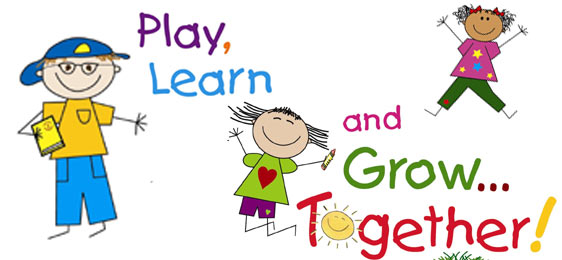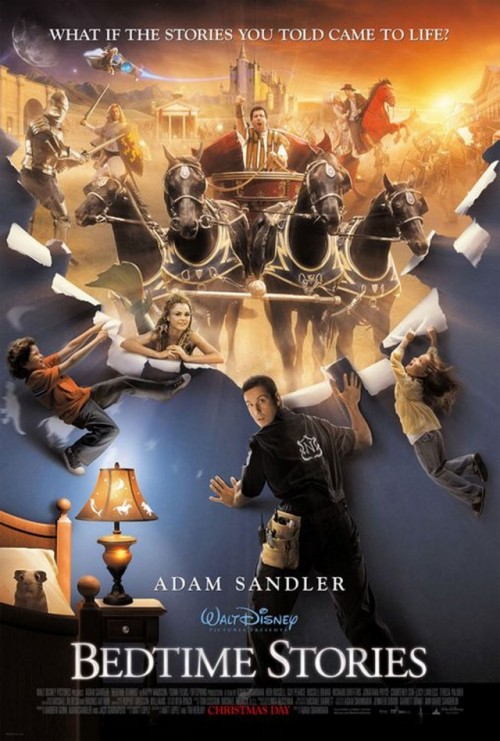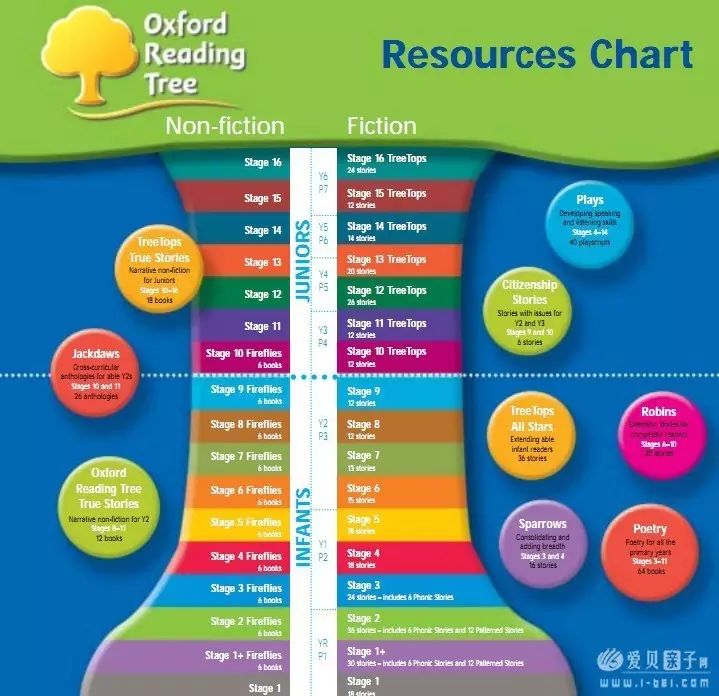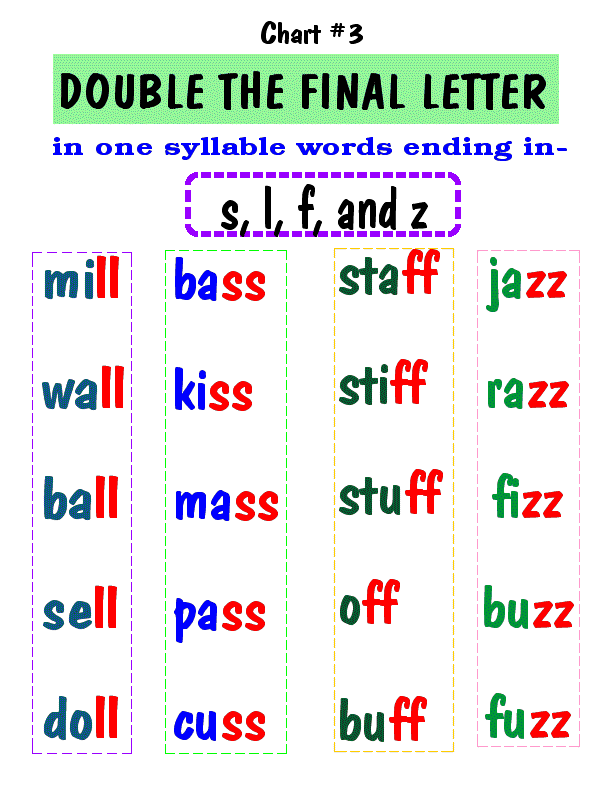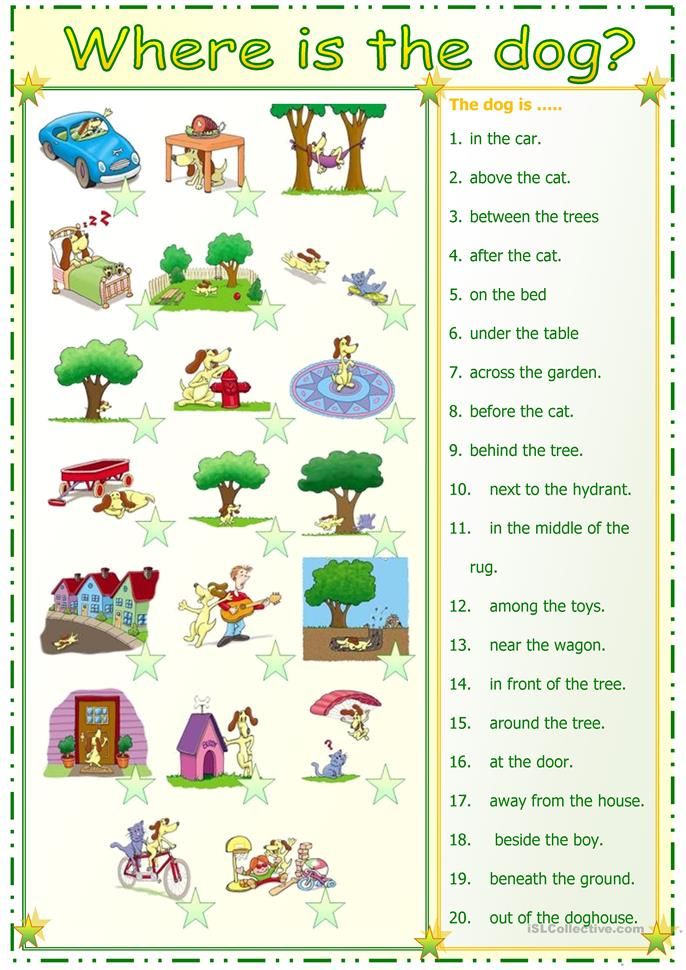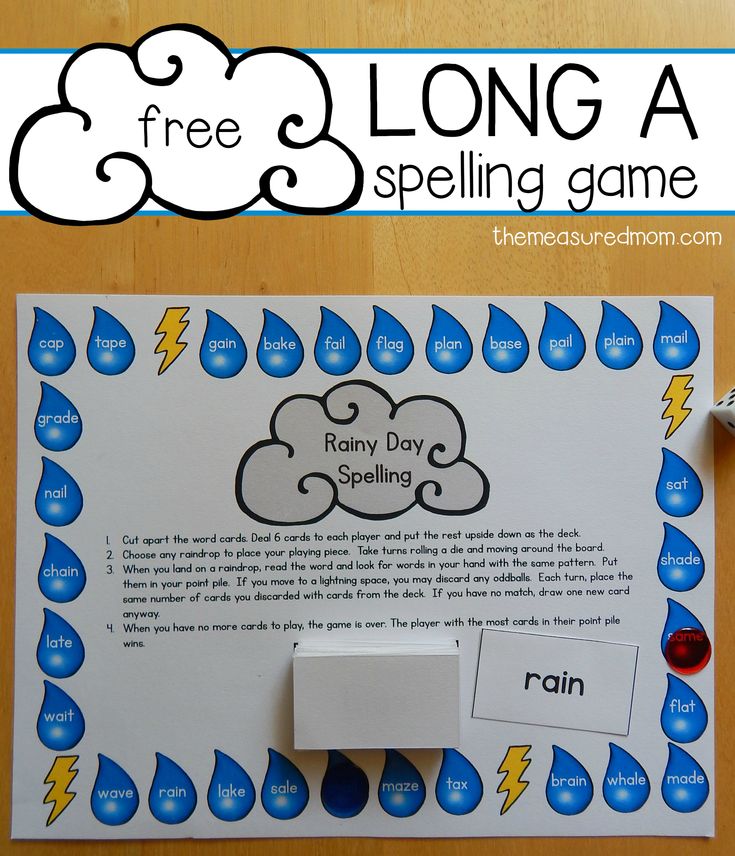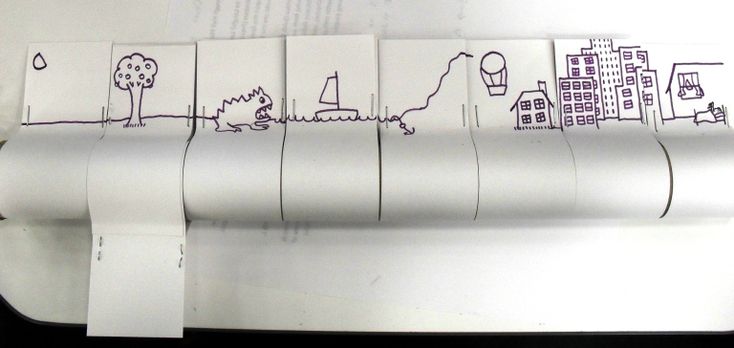Help children with reading
Tips to Help Children Learn to Read
Written by Dayva Segal
In this Article
- Read Out Loud to Your Children
- Other Tips to Help Your Children Learn to Read
- What to Do if Your Child Is Having Trouble With Reading
Reading is an important skill that children will use daily for the rest of their lives. While many children learn to read at school, parents can enhance the experience by offering support at home. This support can begin as soon as your child is born.
Read Out Loud to Your Children
Experts agree that reading out loud to your children is the best way to help them learn to read. Start when your child is a newborn baby and continue throughout childhood. As a baby, your child is primed to learn the skills that will help them learn to read as they get older.
To make reading out loud as effective as possible, make sure to:
- Read age-appropriate books. Babies, for example, enjoy board books that they can touch and play with.
Older children may enjoy "big books" that help them to see differences in words and letters.
- Use silly voices and voice effects. This helps your children to engage with the story and feel excited about reading time.
- Point to words as you read so your child can follow along. Doing this helps solidify the idea that words are where the story comes from.
- Talk about the pictures. Ask your child to name what they see in the pictures and talk about what the images show as it relates to the story.
- Relate the story to life. Show your child how things in the book relate to things that happen in real life.
- Answer questions. If your child asks a question, stop and answer it. That will keep them engaged and interested.
- Read more difficult books. Once your child learns to read, keep reading out loud to them. You can read books that are above their reading level to encourage further improvement in their reading level.

Other Tips to Help Your Children Learn to Read
Besides reading out loud to your children, there are other things you can do to encourage literacy.
- Listen to your child read out loud. Once they learn to read, encourage them to read to you. This helps them build confidence in reading. The goal with reading aloud is for your child to understand the story. So if they need help pronouncing a word, tell them how it's said instead of making them sound it out — that way, they don't lose their place or the meaning of the sentence. If your child accidentally uses a word that doesn't make sense, have them go back and reread the sentence.
- Praise your child's reading. As your child learns reading, offering praise helps them gain confidence.
- Make reading time part of your daily routine. Daily reading time creates a routine that lets your child know reading is part of everyday life. Many families choose bedtime as their preferred reading time.

- Leave books in your kid's bedroom. That way, they can look at them and enjoy them whenever they want.
- Let your child complete sentences. If your child learns the words in their favorite books, let them finish the sentences or "read" the whole book out loud.
- Read books your child likes. This helps them to engage with reading time and enjoy it more.
- Remember, anyone can teach reading. Some parents think that only teachers can teach reading to children. But parents can, too. Reading is an essential life skill.
- Be patient. If your child shows no interest in a book, don't force it. If your child tries to write a word and gets a letter wrong, they still deserve praise. Patience and praise are more helpful for a child's learning to read than getting frustrated or yelling.
- Talk to your children. Exposing your child to new words and language can help their literacy skills.
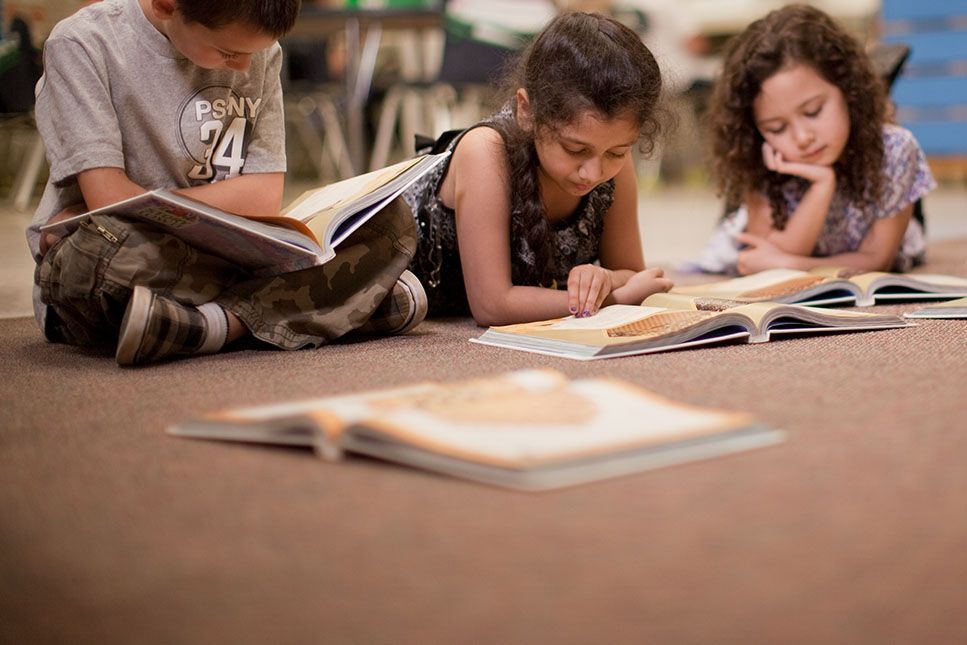 Talking to your baby a lot, for example, can help them become better readers later on.
Talking to your baby a lot, for example, can help them become better readers later on. - Encourage writing. Writing is part of literacy. Provide writing tools like crayons, pencils, and markers. Encourage your child to write, even if it's just scribbling. One idea is to write your child a letter and ask them to write one back.
- Have your child tell you a story and write it down. Ask your child to tell you a simple story. Write it down and then read it back to them while pointing at the words.
- Teach your child phonics. There are countless products available that help children learn the sounds that are associated with letters. This helps them to sound out words as they are learning to read. You can also just use paper and a pencil to help them learn this skill. Research shows that when children don't know phonics, they struggle more with reading.
- Avoid "leveled" reading programs.
 Some people believe that children who get frustrated by reading difficult material will get turned off by reading. But experts say that children learn more when they're exposed to more challenging reading material. Easy-level books often train children to rely on word memorization because they often use the same words over and over. They also train children to rely more on pictures. That can lead to slower reading development. It's best if children are exposed to a variety of challenges in their reading materials.
Some people believe that children who get frustrated by reading difficult material will get turned off by reading. But experts say that children learn more when they're exposed to more challenging reading material. Easy-level books often train children to rely on word memorization because they often use the same words over and over. They also train children to rely more on pictures. That can lead to slower reading development. It's best if children are exposed to a variety of challenges in their reading materials. - Talk to teachers. Ask your child's teachers about their reading program and how they teach literacy. Look for them to include phonics, reading out loud in class, vocabulary, and writing practice.
What to Do if Your Child Is Having Trouble With Reading
If your child's reading is not progressing, you should work with their school to get testing done. That way, you can find out if your child has a learning difficulty or difference, or if it's simply that the reading program in their class doesn't work for them. If your child does get diagnosed with a learning difference, like dyslexia, they're entitled to receive extra services from their school for free.
If your child does get diagnosed with a learning difference, like dyslexia, they're entitled to receive extra services from their school for free.
You can also hire a tutor to help your child improve their reading. Free tutoring may be available for students from low-income families.
At home, provide ongoing emotional support to keep your child from getting discouraged.
Finding Help | Reading Rockets
Children with reading difficulties benefit from the same thing all children benefit from — excellent reading instruction tailored to their needs. But sometimes kids who struggle need more.
Several people may be able to provide your child with extra help:
- Classroom teachers
Your child's teacher may be able to provide more intensive instruction
- School specialists
Specialists at your school — such as the reading specialist, speech/language pathologist, or special education teacher — may be able to provide extra assistance
- Tutors
The school, another organization, or private tutors may be able to provide your child practice with reading or more intensive help
- Professionals in private practice
Educational psychologists and other professionals in private practice may be able to provide an assessment, diagnosis, and/or a plan for helping your child
- Reading clinics
University and private reading clinics may be able to provide an assessment, diagnosis, and/or a plan for helping your child
Help from private tutors and others outside of the school may be very effective but also quite expensive. Some public school services, which are free, are only provided if a child is diagnosed with a learning disability, the most common of which is difficulty with language and reading.
Some public school services, which are free, are only provided if a child is diagnosed with a learning disability, the most common of which is difficulty with language and reading.
If you suspect your child may have a learning disability (or ADHD), the best place to begin seeking help is your child's school. Public schools have professionals trained to make a diagnosis. They do not charge a fee for these services.
If you disagree with the school's diagnosis, you have the right to ask for further testing or to seek a diagnosis from a professional in private practice. Similarly, if the school does not think it necessary to assess your child, you may want to seek a diagnosis from a professional in private practice.
Remember, in order to qualify for special education services or accommodations, your child must have a diagnosis that clearly shows he or she has a learning disability that meets the criteria defined by law. In general, federal law says that a person is eligible for accommodations when a documented disability significantly interferes with a major life activity such as learning. Most states use criteria related to the discrepancy between a child's ability and achievement. Federal laws also set clear guidelines on what special education accommodations must be provided.
Most states use criteria related to the discrepancy between a child's ability and achievement. Federal laws also set clear guidelines on what special education accommodations must be provided.
The bottom line is that it's important to know upfront what services are available from the school and how a child's eligibility for those services is determined.
Tutoring
Sometimes kids just need an extra dose of reading help. Many schools provide tutoring support that includes one-on-one reading instruction. To make sure that your school has a high quality tutoring program, ask these questions:
- How are the tutors trained?
It's important that the tutors understand the goals and purposes of the lesson.
- What is the structure of the tutoring session?
Good tutoring programs use a lesson plan that is based in the best reading research.
- How frequently will my child receive tutoring?
Students should be tutored at least twice a week, for 45 to 60 minutes each time.
 Some students will need more.
Some students will need more. - Are the students assessed regularly to determine progress?
A reading specialist should supervise the assessment program.
- What types of materials are used during the tutoring sessions?
Students should be carefully guided through books that are written at their reading level.
- Does the content of the tutoring session support my child's classroom instruction?
It should.
- Does the content address my child's specific needs?
If your child sounds out words well but struggles with vocabulary, the tutor should spend more time on word meanings than phonics.
Special education
Even with good classroom teaching and extra help, its possible that your child may continue to struggle with reading. Special education may be the answer — and it's required by law for students who are identified as having a learning disability.
The special education process includes these steps:
- Referral
You or your child's teacher suspects a problem and requests an evaluation by the school.

- Evaluation
With input from you and your child's teacher, a team of school professionals completes a full evaluation of your child. This same team — which may include a school psychologist, a speech-language pathologist, and a reading specialist — reviews the results to determine whether your child is eligible to receive special education services.
- Eligibility
If your child is eligible, you and the school team develop your child's Individualized Education Plan (IEP), as required by law. Annually, or more often, you and the school review the IEP and its impact on your child's progress.
If your child is ineligible, continue to push the school for help. If your child is not eligible but still struggles with reading, the school must figure out what will work for your child. You can also turn to private testing.
Top Articles
Especially for Parents
Research Briefs
Featured Video: Finding Help
See also
Read online “How to help children to love reading”, Lyudmila Kasatkina-liters
© Lyudmila Kasatkina, 2020
ISBN 978-5-0051-9232-5
Created in the intellectual publishing system Ridero 9000 9000 9000 Book that you are reading right now is the result of many wonderful people.
Thanks to my mother Maya, who organized family reading evenings, and I, three years old, listened to Karamzin, Zhukovsky, Lermontov. Thanks to my brother Alexander for learning the lessons aloud, and as a five-year-old child, I listened to the subjects from the high school course. Thanks to my sister Claudia, who, after the first grade, made me read a big book written from the point of view of a fly traveling around the house, and I fell in love with biology and psychology at the same time.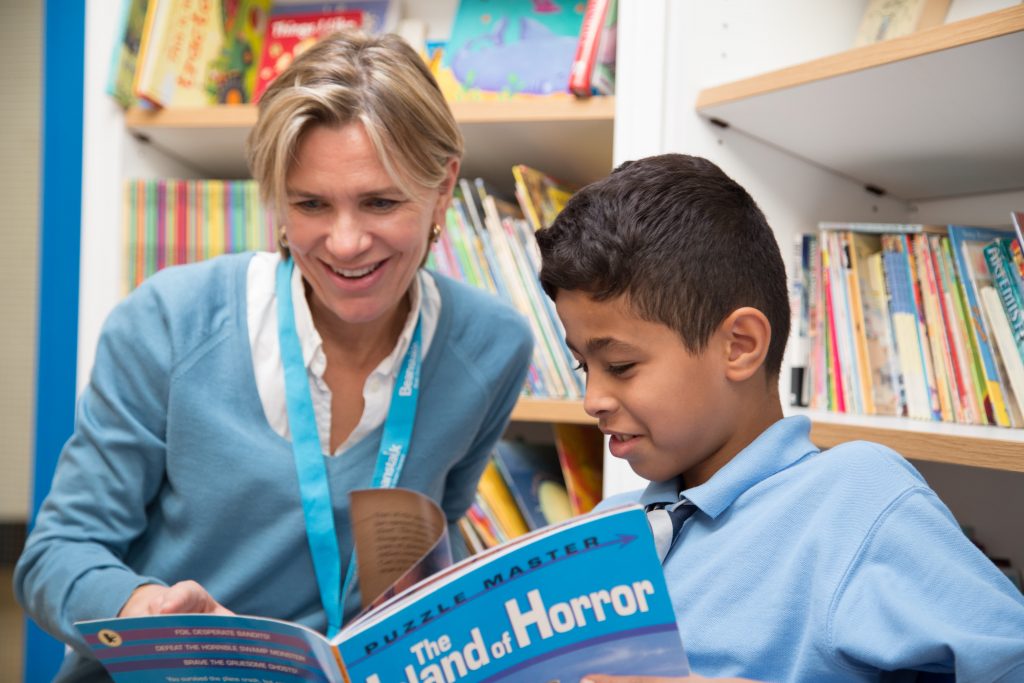 Thanks to Brother Felix, who tried to figure out how fast reading works on his own. Thanks to my children Zhenya and Dasha, who inspired me to find ways to help them easily and freely enter the world of books. And then Zhenya and Dasha went around Kaluga with me hundreds of times, posting ads calling on parents to develop children's reading. Thanks to my husband Evgeny for technical and moral support. And also thanks to all the parents who entrusted me with their children, and thanks to working with them, the search and creativity do not stop!
Thanks to Brother Felix, who tried to figure out how fast reading works on his own. Thanks to my children Zhenya and Dasha, who inspired me to find ways to help them easily and freely enter the world of books. And then Zhenya and Dasha went around Kaluga with me hundreds of times, posting ads calling on parents to develop children's reading. Thanks to my husband Evgeny for technical and moral support. And also thanks to all the parents who entrusted me with their children, and thanks to working with them, the search and creativity do not stop!
This book is for caring parents and teachers.
All the names of the children in the book are fictitious, but the stories I saw and understood are real and quite common.
Introduction
On the path of love...
Parents often say, "My child doesn't like to read."
It is clear that such a conclusion does not add confidence regarding the future of the reader's child. When I want to find out from parents what, in their opinion, the love of reading “looks like”, the following sketch appears: every day a child reads for a long time and with interest. What parent wouldn't love this? The child does not cause trouble: he sits quietly with a book in his hands, but most importantly, he develops his intellect! And it doesn’t matter that this child is still five or six years old, or maybe he is a primary school student. I am forced to note that a healthy child naturally has a desire for movement and games, for communication with peers. And if a miracle child sits for hours at books, then you should be concerned about his physical development and lack of communication with peers.
What parent wouldn't love this? The child does not cause trouble: he sits quietly with a book in his hands, but most importantly, he develops his intellect! And it doesn’t matter that this child is still five or six years old, or maybe he is a primary school student. I am forced to note that a healthy child naturally has a desire for movement and games, for communication with peers. And if a miracle child sits for hours at books, then you should be concerned about his physical development and lack of communication with peers.
How can you help your child fall in love with reading and not harm it?
A child's statement "I don't like to read" is usually not an accident. Children do not come to this conclusion without the participation of their parents: your attitude to the situation that is developing with reading, your grades do their job.
Let's talk about the intricacies of forming another reality. In order for the situation to move forward, you, dear parents, must be ready to spend your time, even 10 minutes a day, but regularly, on the formation of a new reality in the child - the ability to enjoy reading.
First of all, you need to get rid of illusions and habits that prevent you from moving in the desired direction. Do not hope that you will get your child to read by repeating the phrases over and over again: “You need to read, you need to read more. Vaughn Vanya reads 120 words per minute, he already reads big books, and look how he learns! And you haven’t read a single book to the end, it’s impossible to put you down for books ... ". Such speech is colored with emotions of discontent, and sometimes anger and despair. It is easy to imagine what confusion of feelings arises in the soul of a child when a parent breaks out into such tirades.
Any process has its stages. And rather than fruitlessly dreaming about love for a book, it is better to take small steps towards it! You can start by looking at colorful books and family reading in the evenings. But your refusal “it’s impossible with him” is a serious symptom of the weakness of your endurance. It is difficult to develop the will of a child when you yourself are weak-willed.
If you don't get results after several months of regular work, go to a specialist to find out the reason for the failures and correct your actions.
Maybe you need to reduce the level of difficulty, maybe you need to cope with your negative emotions that make it difficult for the child to move forward.
Meaningful Patience
As an axiom that does not require proof, the conclusion from the lips of parents and teachers about the cause of reading difficulties is: “He is inattentive!” And often they are right! But what to do? How to help? "Be careful" spells don't work. Such manifestations of attention as self-control, willpower, patience are personality characteristics that grow and strengthen in communication, in interaction and, above all, with parents. How much are you willing to spend on your own child? No, not money, but the most expensive currency - your attention? Will your costs be justified?
Often the beginning of the story that parents tell coincides with my personal one: the child didn’t even want to listen when they were read to him, turned around, asked: “Don’t…” Only to a wonderful continuation of this story, when children cannot fall asleep without a bedtime story , not everyone gets.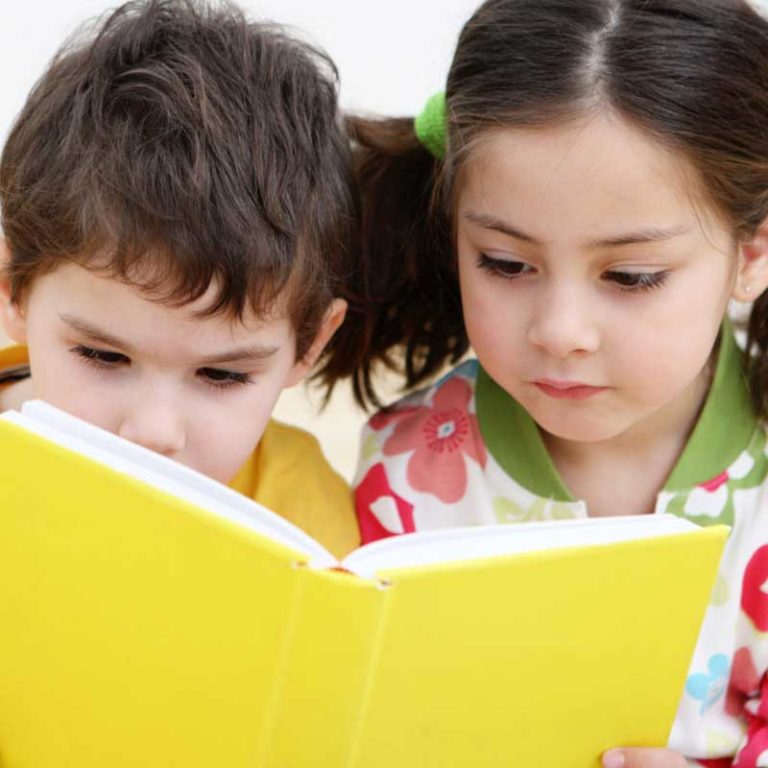 Parents who have not managed to get their child to read say so in plain text: “My strength is gone, my patience has run out!”
Parents who have not managed to get their child to read say so in plain text: “My strength is gone, my patience has run out!”
When my daughter grew up, and I already had a successful experience of reading to my son before going to bed, I began to read to her too. But except for one unpretentious tale, which she learned almost by heart, she did not want to listen to anything! I understood that my daughter and son are different, and even maternally admired her immediate reactions to my attempts to read new fairy tales. I remember how she started fidgeting, taking the book from me. But I did not give up, I understood that it would take a little more time and resourcefulness, and my daughter would love to listen to fairy tales. At first, I read her favorite book, then I showed illustrations for a new fairy tale and warned that I would read it just a little. And after two months, our “little bit” has grown into an adored reading before bed!
What if your son or daughter still doesn't like reading despite their efforts? We can love our children for who they are. They may just be different and never love reading, but they will have the good experience of a book that they can get because of you.
They may just be different and never love reading, but they will have the good experience of a book that they can get because of you.
Your attention to the child is the desire, and then the ability to see, understand and accept how he feels while communicating with the book, listen to the subtleties and nuances of this process: what he likes, what he doesn’t, how long he can stay in the space of the book. Soothing pauses, when children become the center of your calm attention, are simply necessary. Staying in them, you will understand how your child can move on. Feeling parental attention, the child himself becomes more attentive.
A study by Dr. Chun Yu from Indiana University showed that the concentration of attention of babies on toys directly depends on how long an adult looks at the same object. It turned out that in order for a child to become interested in a toy, it is necessary that the parent keeps his eyes on it for at least 3.6 seconds, otherwise the child does not focus his attention on it.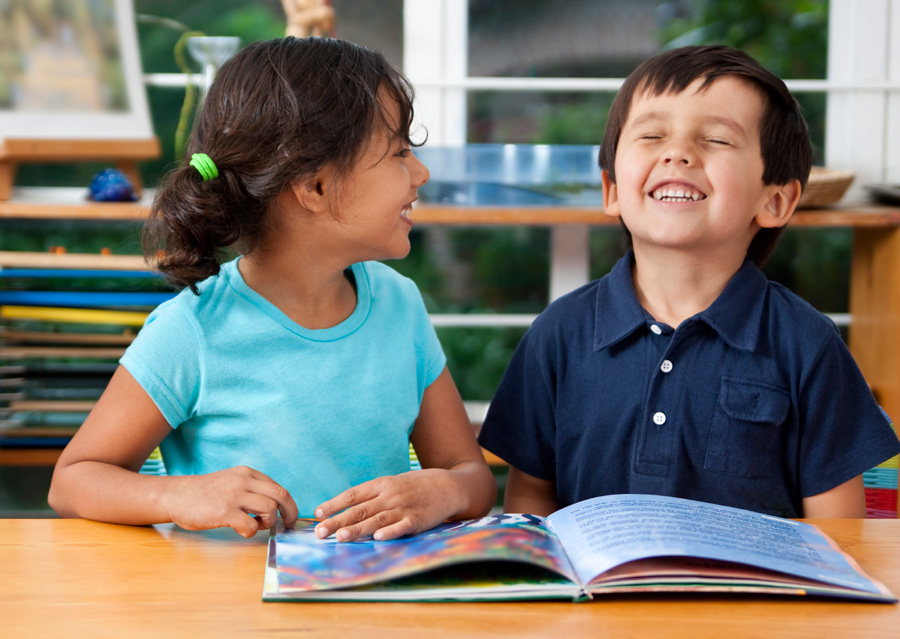
And here is an example from life. I am studying with a preschooler, while his mother and brother are waiting in the corridor. And what do I see when I look out at the end of the lesson? Mom "went" to the phone, and the youngest son lies face down on the bench and waving his legs wistfully. And such sad pictures are not uncommon: the grandmother and grandson come half an hour before class, the child picks up the phone, and the grandmother sits silently nearby, although there is a free exhibition of paintings nearby, a reading room of the children's library, just parks, and there is always a great opportunity to talk ...
Russian psychologist L. S. Vygotsky made a brilliant discovery at the beginning of the last century, which says that any mental function that we want to develop in a child must initially be present outside. In other words, if you want your child to be attentive, be attentive in communication and learning with him.
Chapter 1. Attention and reading
How attention works
The importance of attention in any kind of intellectual activity is undeniable. We will talk about arbitrary and after arbitrary attention. Since involuntary attention, which is based on our instincts of self-preservation, does not work well when reading books. Figuratively speaking, involuntary attention is when the world around us makes us turn around, react.
We will talk about arbitrary and after arbitrary attention. Since involuntary attention, which is based on our instincts of self-preservation, does not work well when reading books. Figuratively speaking, involuntary attention is when the world around us makes us turn around, react.
A bit of theory: voluntary attention is conscious self-control, which allows you to accumulate brain activity, direct it to the selected object and keep yourself within the set task. Complicated feature? It can and should be developed especially in children of older preschool age. The frontal lobes of the brain are responsible for managing activity, they “formulate” original self-orders that organize and control activity in accordance with certain algorithms. The components of attention-self-control are: vision of the goal, ways to achieve it, and monitoring oneself during work. Of course, at the first stages, voluntary attention requires considerable effort, but as a new skill develops, voluntary attention is formed after that, which is much more effective and less costly for the psyche.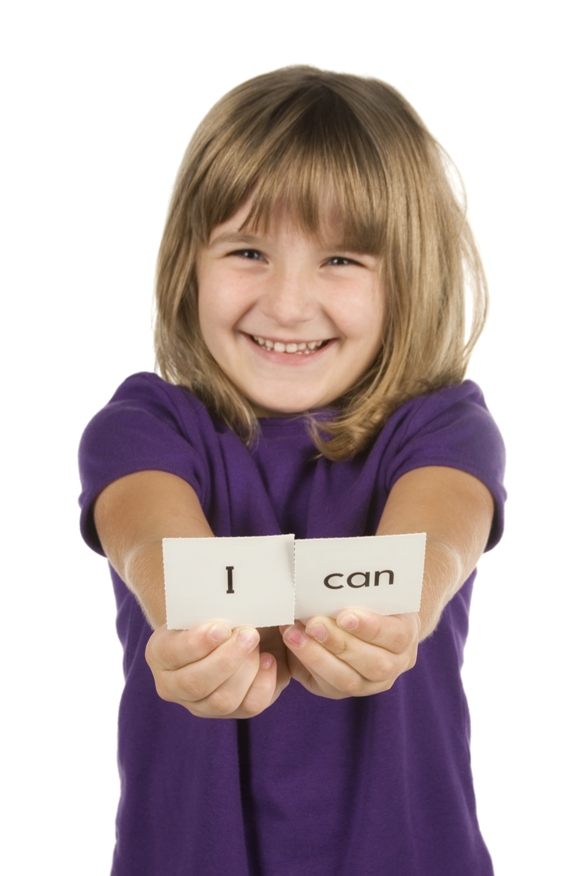
Thanks to voluntary attention, the child learns, while reading, to look at this process as if from the side, tracking its nature: in what direction the eye moves, how clearly the voice sounds, how quickly the words are pronounced, how coordinated the processes of perception of what is printed, comprehension and speaking.
Emphasizing the importance of self-control during reading, one should not forget about the role of deep brain structures that affect the quality of attention, namely the reticular formation. The reticular formation is located in the upper section of the brain stem and tones its cortical sections.
In order for a child to read in accordance with age norms, and possibly even ahead of them, a sufficient reserve of attention is needed. Attention is a high neuropsychic energy, a kind of "fuel" for any mental activity. The truth is that you can improve your attention scores, but you can't get away with one-off sessions.
From a physiological point of view, attention is the ability to control oneself, to keep any one object in sight for a long time, in our case, to perceive printed words clearly, clearly. The ability to focus on activity depends on the development of the reticular formation, which ensures that sufficient tension is maintained in the areas of the cerebral cortex responsible for perception and mental activity. This voltage has a bioelectrical nature. Through training, you can increase the duration and strength of concentration. We all imagine how to increase muscle strength and endurance through training, but few people set themselves the task of consciously training their brain. In 1875, Richard Cato discovered that the brain produces a weak electrical current, and in the early twentieth century, Hans Berger constructed a device that reads the electrical activity of the brain. When we wake up, the brain generates an electrical field of approximately 23 watts, which is comparable to the power of a light bulb in a refrigerator.
The ability to focus on activity depends on the development of the reticular formation, which ensures that sufficient tension is maintained in the areas of the cerebral cortex responsible for perception and mental activity. This voltage has a bioelectrical nature. Through training, you can increase the duration and strength of concentration. We all imagine how to increase muscle strength and endurance through training, but few people set themselves the task of consciously training their brain. In 1875, Richard Cato discovered that the brain produces a weak electrical current, and in the early twentieth century, Hans Berger constructed a device that reads the electrical activity of the brain. When we wake up, the brain generates an electrical field of approximately 23 watts, which is comparable to the power of a light bulb in a refrigerator.
In our first session with children, we discuss the importance of fast, thoughtful reading for each of us. As a rule, the most significant motive for children is the motive of social approval: keeping up with classmates, getting ahead of them, making teachers and parents happy, but not everyone is interested in learning something new. For modern children, it is not entirely clear why they should acquire knowledge in such a painstaking and time-consuming way as reading, when colorful and dynamic knowledge is available in the form of cartoons, films and computer games.
For modern children, it is not entirely clear why they should acquire knowledge in such a painstaking and time-consuming way as reading, when colorful and dynamic knowledge is available in the form of cartoons, films and computer games.
In order to move from the plane of the practical significance of fast reading to understanding the deep processes in oneself, we introduce the concept of the bioelectrical activity of our brain at an accessible level (for preschoolers, we illustrate it with the plot of the cartoon from Smeshariki "Science for Children - the Brain"). Children are able to appreciate the value of such knowledge: they are pleased with the fact of having an amazingly arranged brain! We boldly declare that fast reading is an excellent simulator that increases brain activity! In this vein, it is not by chance that the expression "bright head" sounds.
An increase in the activity of brain neurons is accompanied by an increase in blood supply and an increase in metabolic processes in the brain.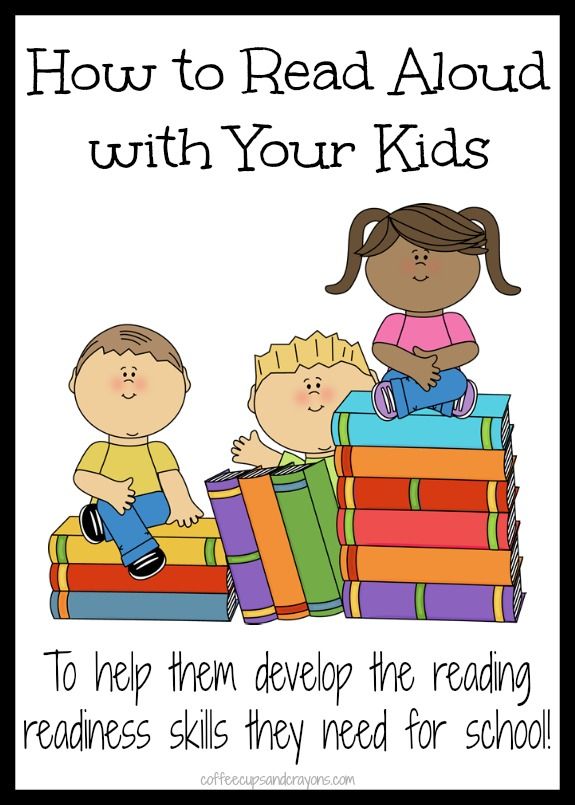 In the late 70s, E. D. Khomskaya 1 found out that the level of bioelectrical activity of the brain depends on the difficulty of performing a task. Fast reading just implies a kind of difficulty, since it requires precise coordination of many mental processes: almost simultaneous perception, comprehension and reproduction (in the case of reading aloud) information, and at the maximum possible pace.
In the late 70s, E. D. Khomskaya 1 found out that the level of bioelectrical activity of the brain depends on the difficulty of performing a task. Fast reading just implies a kind of difficulty, since it requires precise coordination of many mental processes: almost simultaneous perception, comprehension and reproduction (in the case of reading aloud) information, and at the maximum possible pace.
The formation of the skill of speed reading as a stage of the intellectual and cultural development of the individual poses a difficult task for the student: to master special ways of reading. Mental processes that are activated in the course of learning can be classified as non-standard or, in the language of neuroscience, as non-stereotypical. Academician Natalia Bekhtereva 2 , a generally recognized expert in the psychophysiology of the brain, argued that it is in the process of non-stereotypical activity that the brain works at full strength and lives a full life.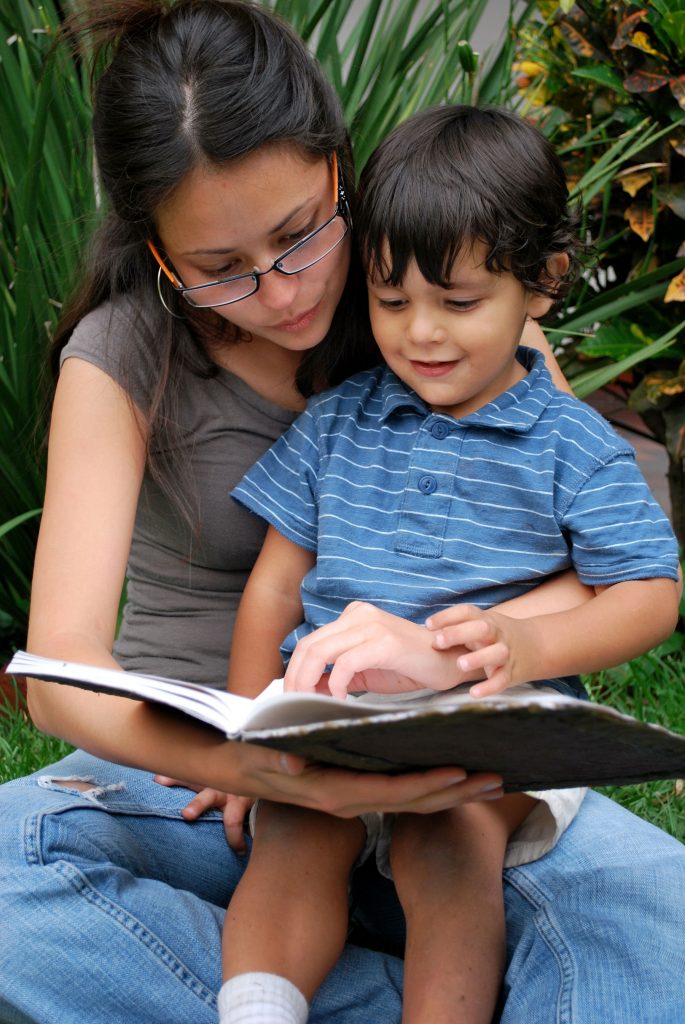 This happens because vast areas of the brain responsible for various types of mental activity are involved in the work.
This happens because vast areas of the brain responsible for various types of mental activity are involved in the work.
Modern medicine has in its arsenal devices with bioelectrical feedback that use the capabilities of electronics. Feedback is based on the registration of attention concentration parameters with their subsequent visualization in a convenient form, for example, on a monitor screen. There is a training system using such equipment for hyperactive children. Sensors are attached to the child's head, which read the parameters of brain activity during the task and register them in the form of an electroencephalogram. For example, a child is offered to focus on a vessel with liquid depicted on the screen, the level of which visualizes the degree of concentration of attention. The subject is asked to keep their attention on the drawing and try to increase the level of liquid in the vessel. The child's efforts to concentrate lead to an automatic increase in brain activity, and the level of fluid in the vessel on the screen rises. Developers are constantly improving the attractiveness of game plots of neurosimulators. For example, they come up with a story of an ant that pushes a load into its anthill and, meeting with various distractions, moves to different levels of complexity. Of course, such a device is very visual and entertaining for a child, but simply concentrating on any object for 5-7 minutes with regular training gives no less result.
Developers are constantly improving the attractiveness of game plots of neurosimulators. For example, they come up with a story of an ant that pushes a load into its anthill and, meeting with various distractions, moves to different levels of complexity. Of course, such a device is very visual and entertaining for a child, but simply concentrating on any object for 5-7 minutes with regular training gives no less result.
Nevertheless, the number of technical devices built according to the “interface-brain-computer” principle, which allow a person to control a computer and other technical devices using brain signals, is growing. Such devices are used as neural interfaces to improve oneself (fitness brain) and just for useful entertainment: Puzzlebox Orbit Helicopter - a toy helicopter controlled by brain signals; MindFlex is a board game in which the player uses the power of thought to control a ball hanging in an airflow created by a fan.
Recognized authorities in the field of developing reading skills Ronald D. Davies and academician O. Andreev use point exercises for concentration in their systems. O. Andreev 3 offers exercises with focus on an external object - a real small green dot in the middle of a printed page. Ronald D. Davies 4 uses the technique of concentrating on an imaginary balance point that occurs as a result of visualizing the top of a cap on a person's head. In both exercises, the same goal is pursued - holding objects, tracking the focus of attention and, in case of its shift, returning to its original position. Physiologically, the function of self-control is based on the relationship between the neural pathways of the frontal lobes and the reticular formation of the brain. A person directs volitional efforts to hold an object, which leads to the activation of the reticular formation, an increase in the level of electrical activity in certain areas of the cortex and an increase in the duration of detailed and thorough recognition of objects.
Davies and academician O. Andreev use point exercises for concentration in their systems. O. Andreev 3 offers exercises with focus on an external object - a real small green dot in the middle of a printed page. Ronald D. Davies 4 uses the technique of concentrating on an imaginary balance point that occurs as a result of visualizing the top of a cap on a person's head. In both exercises, the same goal is pursued - holding objects, tracking the focus of attention and, in case of its shift, returning to its original position. Physiologically, the function of self-control is based on the relationship between the neural pathways of the frontal lobes and the reticular formation of the brain. A person directs volitional efforts to hold an object, which leads to the activation of the reticular formation, an increase in the level of electrical activity in certain areas of the cortex and an increase in the duration of detailed and thorough recognition of objects.
The experiments of the psychologist D. Lindsley 5 revealed that stimulation of the reticular formation improves perception: in this way, animals began to distinguish between images of a cone and a triangle, which was previously inaccessible to them.
Lindsley 5 revealed that stimulation of the reticular formation improves perception: in this way, animals began to distinguish between images of a cone and a triangle, which was previously inaccessible to them.
Having experience in teaching children and adults techniques for developing attention, I want to warn against excessive involvement with external stimuli that affect concentration. Once, discussing the results of self-training in concentration of attention in the Green Dot exercise, one of my students asked: “Why is the dot not red?” Continuing the dialogue, I joked: “And in addition, does it not shock you when you are distracted?” Attention as an internal intellectual resource is primarily a personal volitional effort or its after-voluntary effect, it is primarily self-control and self-correction. It is important to minimize the controlling nature of external stimuli, their annoying, exciting, in the sense of attracting, and stimulating involuntary attention effect.
The biggest problem, in my opinion, in teaching children meaningful and dynamic reading is that reading requires concentration and efficiency, while parents are often not ready to teach their child to work, to turn on the will. There is an opinion that learning should be easy, joyful, unobtrusive, and that the main thing is to arouse interest. And then the same parents are surprised that their child is longingly waiting for new portions of entertainment that should fall on his head.
Parents often object: “My child has excellent perseverance. He can sit for hours without moving, in front of the TV and computer!” In the case of watching cartoons, this is obvious: one's own efforts of will are not required, since we are dealing with involuntary attention - the creators of the product took care of its attractiveness for children.
In the last decades in the United States, an important place has been occupied by research on the problem of low personal activity and those difficulties with self-realization and socialization that the younger generation has.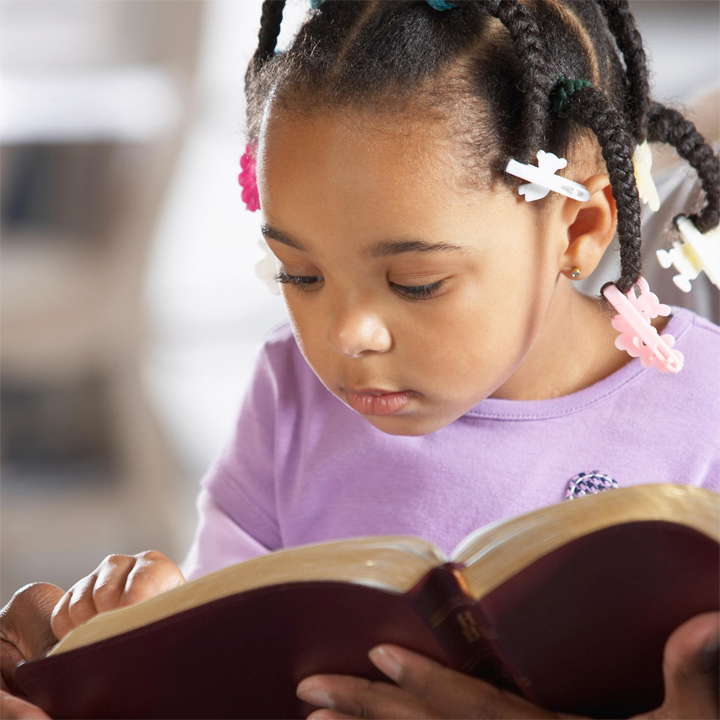 The book by P. Taf "How Children Succeed" 6 is an attempt to convey to the general public the essence of the problem and describe the modern psychological and pedagogical experience of solving it.
The book by P. Taf "How Children Succeed" 6 is an attempt to convey to the general public the essence of the problem and describe the modern psychological and pedagogical experience of solving it.
The time when progressive psychologists, educators and parents around the world introduced the values of free development of the individual, respect for their interests into the educational process, is being replaced by a search for a balance between freedom and submission, comfort and difficulties. The idea of building resilience and self-control suggests that children go through setbacks. P. Tuf comes to the conclusion that modern education is designed to model failures and not just expect a way out of them due to willpower, but to organize the search for ways to productively solve problems and tasks.
Modern civilization provokes frequent switching of attention in children and adults, indulges in endless relaxation and consumption of already processed information.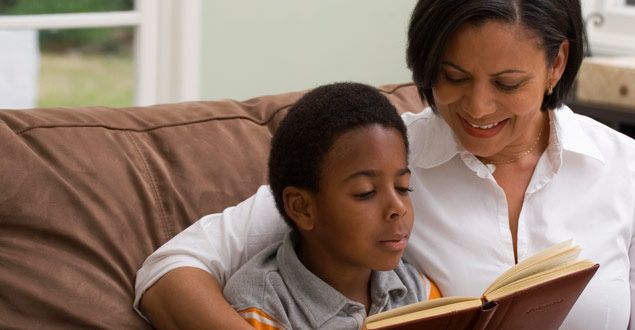 So there is no need for a person to strain to systematize it.
So there is no need for a person to strain to systematize it.
Scientists are furiously discussing the impact of modern gadgets on human abilities. It is undeniable that new technologies offer tremendous opportunities for human development, but also pose significant threats. Is there scientific evidence of the influence of information technology on the human brain?
Researchers from the University of Sussex and University College London 7 concluded that gadgets contribute to the dispersion of attention and even lead to a decrease in the amount of gray matter in the brain!
Lee A.V. 8 studied the influence of multimedia devices on the cognitive functions of adolescents and found that the excessive use of modern means of communication leads to fatigue, decreased concentration, absent-mindedness in children aged 14-16 (which is 65.1%) .
We train attention when reading. About the rules, attention and will
At first, I called this game: “Exactly and forward!”, But somehow dad and son dropped in my classes: “Yours, mine!”, And the name stuck.
What is the point? Mastering the technique of reading requires accurate and fairly quick perception and voicing of syllables and words. To make such trainings for children interesting, we conduct them in a playful way. There are two main conditions in this game: to read exactly and not to repeat the words twice, that is, not to reread them. Leading experts are unanimous that the ability to read without regressions, that is, not to look back, significantly improves the quality of reading. Reading without regressions is a kind of setting for the most accurate synchronization with the text here and now.
I enter the "Precisely and forward" rule already at the stage of reading by warehouses. For example, we learn syllables with the letter "U". The child knows the corresponding letters and has already been shown how to read these syllables. To move on to confident reading, we conduct a training: the parent has cards with warehouses, he shows them to the child one by one, if he reads correctly, his card, no - remains with the parent. Then, after the parent demonstrates the correct reading, the child can “win back” the cards remaining with the parent.
Then, after the parent demonstrates the correct reading, the child can “win back” the cards remaining with the parent.
It is very important to play with individual cards first, and not with warehouses printed in columns and rows. In my classes, I give a whole sheet of printed cards that need to be cut. Some parents are too lazy to cut them, they don’t see the point in it, they say: “Why cut them into separate cards?”
Children 5-6 years old, and even older, need micro-pauses at the first stages of learning to read, which are filled with emotions. Pauses are the time when the child compares his actions with the reaction of his parents. It is the reaction of parents, creative, filled with confidence and optimism, that can turn a training game into a joyful and useful communication. I often met moms' puzzled look in response to my recommendation that the reluctance to learn can be overcome through play. Talking with such parents, I realized that they had long lost the spirit of the game, which is a serious symptom of insensitivity towards the world of the child.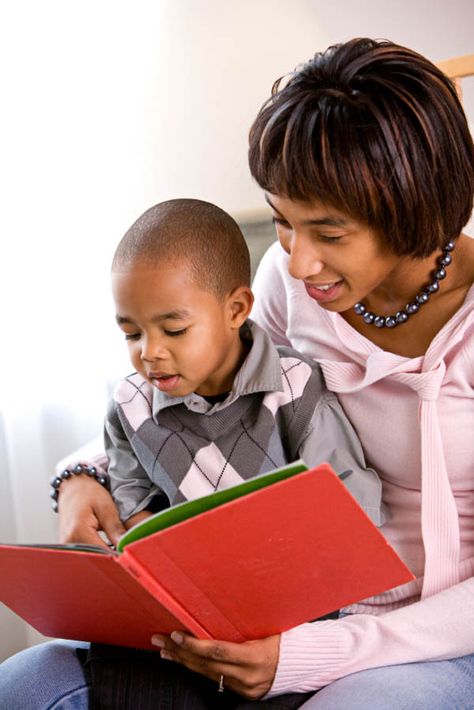 Finally, children have material, visible evidence of their victories - the card they won. Most children are resilient to defeat. If we took into account the initial level of the child, unsuccessful attempts necessarily alternate with victories. The game is accompanied by an emotional upsurge, a healthy passion.
Finally, children have material, visible evidence of their victories - the card they won. Most children are resilient to defeat. If we took into account the initial level of the child, unsuccessful attempts necessarily alternate with victories. The game is accompanied by an emotional upsurge, a healthy passion.
Game plot “Yours, mine!” has many options: you can complicate the reading material (of course, gradually). It is possible and necessary to choose for training difficult for a particular child compounds of letters with a certain vowel or consonant. For example, at first, children have difficulty voicing syllables with the letters Y, E, SH. we introduce an additional rule: you need to explain the read word: tell what it is without saying the word again. The game plot is aimed at the child trying to understand the meaning of the word almost simultaneously with reading aloud. At first, children spend a lot of energy recognizing letters, merging them, so that sometimes they don’t even remember the beginning of the word they just read. At the first stage, repeated reading is justified, it helps the child to hear the word that he read more clearly. So that understanding long words only after repeated reading does not become a habit, we introduce into the game "Yours, mine!" additional condition: "explain the meaning of the word without pronouncing it." For example, a child read the word "airplane" and explained: "This is air transport." Any answers that confirm the understanding of the word are accepted, for example, “it flies”, “metal”, and the like. As soon as the child has learned to confidently read the words he understands, we include a small number of complex, unfamiliar words in the training. Accurately voicing the words they do not understand, children get to know them by ear on their own. Most children, when they meet an unfamiliar word, get lost and embarrassed because they doubt the correctness of their reading. Many elementary school students, and even teenagers, experience confusion when they encounter difficult words.
At the first stage, repeated reading is justified, it helps the child to hear the word that he read more clearly. So that understanding long words only after repeated reading does not become a habit, we introduce into the game "Yours, mine!" additional condition: "explain the meaning of the word without pronouncing it." For example, a child read the word "airplane" and explained: "This is air transport." Any answers that confirm the understanding of the word are accepted, for example, “it flies”, “metal”, and the like. As soon as the child has learned to confidently read the words he understands, we include a small number of complex, unfamiliar words in the training. Accurately voicing the words they do not understand, children get to know them by ear on their own. Most children, when they meet an unfamiliar word, get lost and embarrassed because they doubt the correctness of their reading. Many elementary school students, and even teenagers, experience confusion when they encounter difficult words. Children read more confidently when they know that incomprehensible words can be explained by the author in the text, their meaning can be guessed by consonance, and, finally, they can turn to adults for help.
Children read more confidently when they know that incomprehensible words can be explained by the author in the text, their meaning can be guessed by consonance, and, finally, they can turn to adults for help.
Description of the game "Yours, Mine!" you will find in the Appendix at the end of the book (Appendix 1).
The complexity of words for training should increase gradually: at first these are words of two direct syllables with the letters “a, o, u, s, e”, denoting one sound, for example, “Sasha, Masha, mother, moon”, then small words with ioted vowels: "e, e, yu, i" such as "jung, pit". Then we increase the number of syllables in a word, for example, "Pinocchio, iceberg", we give words with a confluence of consonants: "construction, line." A wonderful tool for such games with individual words already ready for use, arranged from simple to complex, is the textbook “Quick Reading” by S. A. Belolipetsky 9 .
Improving reading technique through play may be accompanied by the introduction of additional rules that are relevant for specific children, namely: pronounce syllables together, a little in a singsong voice, without artificially highlighting individual syllables when reading, “do not chop” words into syllables, read loudly, clearly, confidently . Workouts that involve following these rules usually give good results.
Workouts that involve following these rules usually give good results.
How to help your child love reading. Seven rules and three principles that don't work
Child development
How to help your child love reading. Seven rules and three principles that don't work
October 14, 2021 28 673 views
Marina Novikova
Reading develops thinking, memory, attentiveness, speech, imagination, literacy, general outlook, gives positive emotions. But for children, these words mean nothing. How can you help them love this process? How to get interested in reading at any age? Psychologist Marina Novikova offers seven practical tips to help adults and children fall in love with reading.
1. Value
Sometimes parents get so caught up in buying books that they forget about the right amount of books. If a child listens or reads all purchases with pleasure, great! If not, you should think about where to put away irrelevant literature for a while.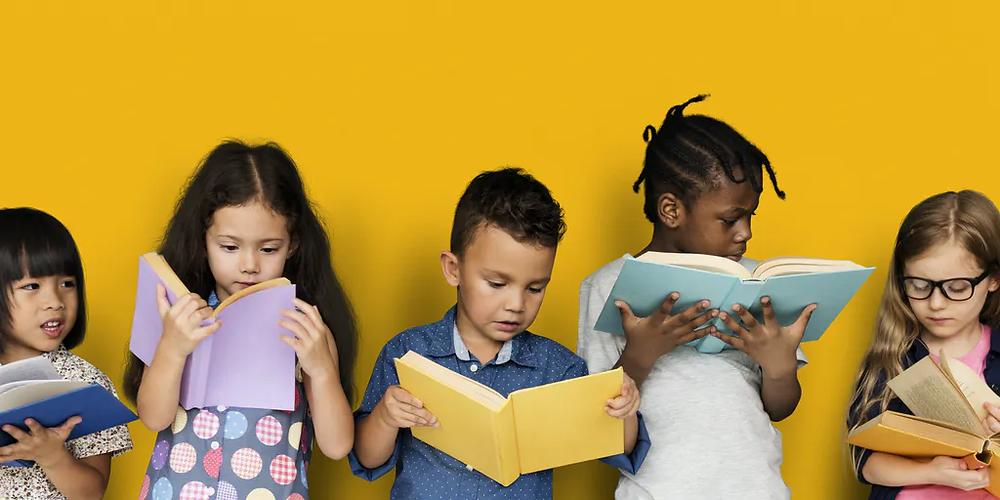 Sometimes we begin to devalue what we have too much. Cultivate respect for books. Remember how in childhood we carefully “repaired” them for the library? Do not allow to tear, throw.
Sometimes we begin to devalue what we have too much. Cultivate respect for books. Remember how in childhood we carefully “repaired” them for the library? Do not allow to tear, throw.
2. Availability
Let the child be able to reach the book on their own. Open horizontal narrow shelves are popular, on which parents put the book in such a way that the baby sees the cover, and not just the spine. Take older children to the bookstore, library more often so that they have the opportunity to pick up literature according to their interests.
3. Comfort and aesthetics
This rule is of particular importance for children of all ages: the type in the book must be clear and the illustrations must be pleasing to the child. Everything is individual - try, select, pay attention to the reaction and emotions of a small listener or reader. Choose books together!
4. Offer but don't force
Everything has its time. Violence has not yet led to a positive result for anyone.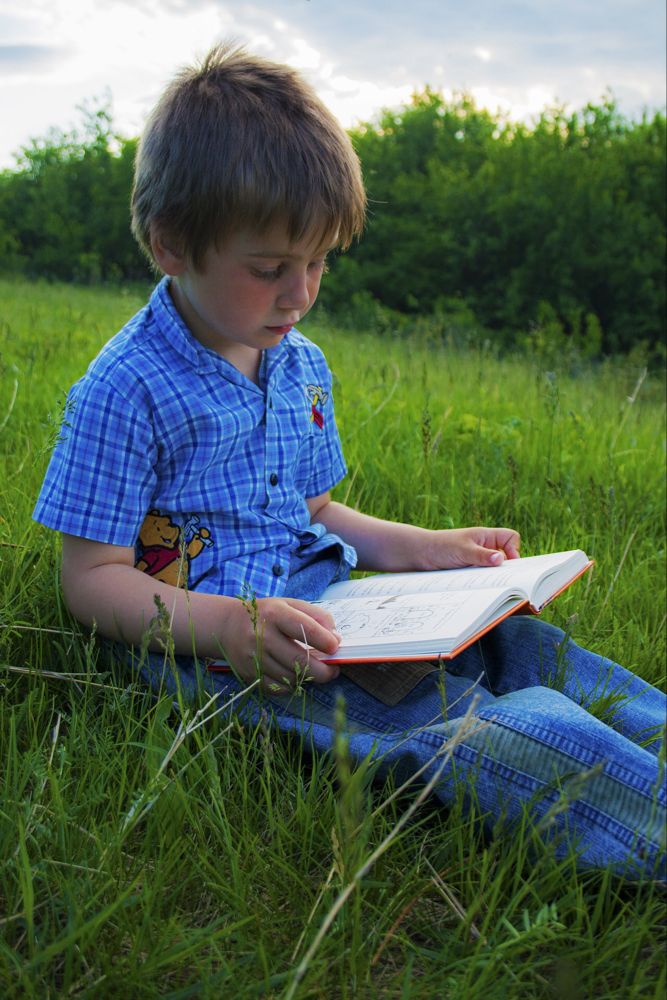 It's not the quantity that matters, but the quality when it comes to interest. It is better for a child to read one book with pleasure than several for a reward or out of fear. Pay attention to comprehension of what you read, ask to retell aloud, read by roles. Make the process fun. If we are talking about schoolchildren, it is not necessary to master the entire school curriculum. Some works can be read in summary or listened to in audio format. Interest often helps to overcome difficulties.
It's not the quantity that matters, but the quality when it comes to interest. It is better for a child to read one book with pleasure than several for a reward or out of fear. Pay attention to comprehension of what you read, ask to retell aloud, read by roles. Make the process fun. If we are talking about schoolchildren, it is not necessary to master the entire school curriculum. Some works can be read in summary or listened to in audio format. Interest often helps to overcome difficulties.
Read out loud more often. The Bunny Who Wants to Sleep book. Photo by the author
5. Creativity and interests
Offer not just to read a book, but to draw an illustration, mold a character, come up with a different ending. Or try to compose a story together “what happened next?” Link your child's interests to reading. What is important to him now? Some are fond of poetry, others - prose, others - scientific literature. What interests your child? What worries him now? Start from his needs.
6. Time
Sometimes we give up too soon or wait for quick results. Give your child and yourself time. Take it step by step, be consistent.
7. Personal example
Perhaps it was necessary to start from this point. How often does a child see you with a book? Do you discuss what you read aloud? Read what interests you. Try to make adult books not only in electronic format. Sometimes parents say: “Yes, at his age I have already read so many books! And he…” No comparisons needed. All different. You don't have a competition. Let reading be a pleasure.
1. Incentives, gifts, payments. Sometimes it seems to parents that extrinsic motivation can help. And that's right. It will work great today, but not in the future. Incentives have a negative side - sometimes their number needs to be increased. I still suggest focusing on interests. Let a special book that a child dreams of be a good gift.
2. Shame and comparisons.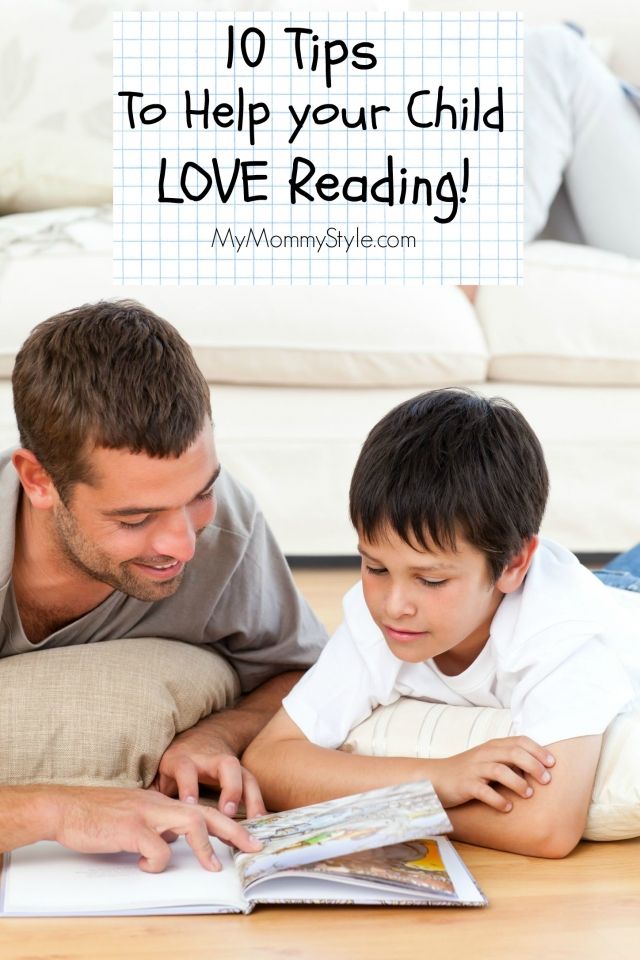
Learn more


